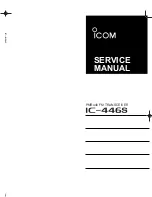
Page 9
Page 8
POWER SUPPLY REQUIREMENTS
The module does not have an internal voltage regulator; therefore it requires a
clean, well-regulated power source. While it is preferable to power the unit from
a battery, it can also be operated from a power supply as long as noise is less
than 20mV. Power supply noise can significantly
affect the receiver sensitivity; therefore, providing
clean power to the module should be a design priority.
A 10
Ω
resistor in series with the supply followed by a
10µF tantalum capacitor from V
CC
to ground will help
in cases where the quality of the supply power is poor.
Note that the values may need to be adjusted
depending on the noise present on the supply line.
USING THE PDN LINE
The Power Down (PDN) line can be used to power down the transceiver without
the need for an external switch. This line has an internal pull-down, so when it
is held low or simply left floating, the module will be inactive.
When the PDN line is pulled to ground, the transceiver will enter into a low-
current (~20µA) power-down mode. During this time the transceiver is off and
cannot perform any function. It may be useful to note that the startup time coming
out of power-down will be slightly less than when applying V
CC
.
The PDN line allows easy control of the receiver state from external components,
such as a microcontroller. By periodically activating the transceiver, sending
data, then powering down, the transceiver’s average current consumption can be
greatly reduced, saving power in battery-operated applications.
Note:
If the T/R SEL line is toggled when the transceiver is powered down, internal logic
will wake up and increase the current consumption to approximately 350µA. When high,
the T/R SEL line will sink approximately 15µA, so the lowest current consumption is
obtained by placing the LT into receive mode before powering down.
USING THE RSSI LINE
The transceiver’s Received Signal Strength Indicator (RSSI) line serves a variety
of functions. This line has a dynamic range of 80dB (typical) and outputs a
voltage proportional to the incoming signal strength. It should be noted that the
RSSI levels and dynamic range will vary slightly from part to part. It is also
important to remember that RSSI output indicates the strength of any in-band RF
energy and not necessarily just that from the intended transmitter; therefore, it
should be used only to qualify the level and presence of a signal. Using RSSI to
determine distance or data validity is not recommended.
The RSSI output can be utilized during testing, or even as a product feature, to
assess interference and channel quality by looking at the RSSI level with all
intended transmitters shut off. RSSI can also be used in direction-finding
applications, although there are many potential perils to consider in such
systems. Finally, it can be used to save system power by “waking up” external
circuitry when a transmission is received or crosses a certain threshold. The
RSSI output feature adds tremendous versatility for the creative designer.
+
10
Ω
10
μ
F
Vcc IN
Vcc TO
MODULE
Figure 19: Supply Filter
THEORY OF OPERATION
The LT Series transceiver sends and recovers
data by AM or Carrier-Present Carrier-Absent
(CPCA) modulation, also referred to as On-Off
Keying (OOK). This type of modulation
represents a logic low ‘0’ by the absence of a
carrier and a logic high ‘1’ by the presence of a
carrier. This method affords numerous benefits.
The two most important are: 1) cost-effectiveness due to design simplicity, and
2) higher legally-allowable output power and thus greater range in countries
(such as the U.S.) that average output power measurements over time.
The LT’s receiver chain utilizes an advanced synthesized superheterodyne
architecture and achieves exceptional sensitivity. Transmitted signals enter the
module through a 50-ohm RF port intended for single-ended connection to an
external antenna. RF signals entering the antenna are filtered and then amplified
by an NMOS cascode Low Noise Amplifier (LNA). The signal is then down-
converted to a 10.7MHz Intermediate Frequency (IF) by mixing it with a low-side
Local Oscillator (LO). The LO frequency is generated by a Voltage Controlled
Oscillator (VCO) which is locked by a Phase-Locked Loop (PLL) frequency
synthesizer referenced to a precision crystal. The mixer stage is a pair of double-
balanced mixers and a unique image rejection circuit, which greatly reduces
susceptibility to interference. The IF frequency is further amplified, filtered, and
demodulated to recover the original signal. The signal is squared by a data slicer
and output on the DATA line.
The LT’s transmitter chain is designed to generate up to 10mW of output power
into a 50-ohm single-ended antenna while suppressing harmonics and spurious
emissions. The transmitter is comprised of a VCO locked by the PLL. The output
of the VCO is amplified and buffered by a power amplifier. The amplifier is
switched by the incoming data to produce a modulated carrier. The internal
digital logic controls a switch that connects the LNA input to ground when in
transmit mode, preventing the transmitter from de-sensitizing the receiver. The
carrier is filtered to attenuate harmonics, and then output on the 50-ohm RF port.
The transceiver’s topology makes the module highly immune to frequency
pulling, mismatch, temperature, and other negative effects common to some low-
cost architectures. The LT Series design and component quality enable it to
outperform many far more expensive transceiver products, making it well-suited
for a wide range of consumer and industrial applications.
D
a
t
a
S
licer
LNA
RX VCO
PLL
XTAL
0°
90°
Limiter
RX D
a
t
a
An
a
log
∑
10.7MHz
IF Filter
B
a
nd
S
elect
Filter
50
Ω
RF IN
(Antenn
a
)
+
-
Digit
a
l
Logic
TX VCO
R
SS
I
A REF
PA
PDN
T/R
S
EL
DATA
GND
Figure 17: LT Series Transceiver Block Diagram
Data
Data
Carrier
Carrier
Figure 18: CPCA (AM) Modulation































